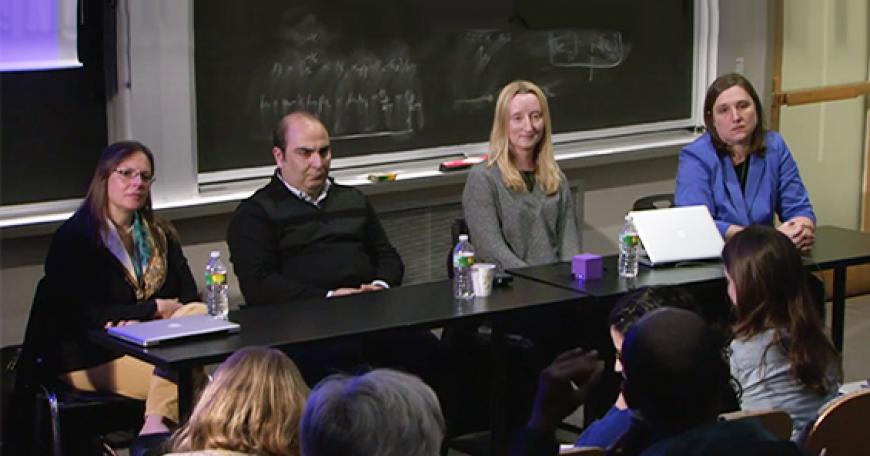
Highlights from "Blended Learning on MIT's Campus" Nov 16 xTalk
MIT’s online learning platform, MITx, allows educators to develop and share knowledge, and provides students with essential tools and resources outside the classroom.
At the Nov 16 xTalk, a panel of four MITx Digital Learning Scientists and educators, Dr. Simona Socrate from Mechanical Engineering, Dr. Saif Rayyan from the Physics Department, Dr. Mary Ellen Wiltrout with the Biology Department, and Dr. Jessica Sandland from Materials Science & Engineering, shared their experiences implementing blended learning in residential classes at MIT. Here are the highlights of their discussion:
1.) Structure
MITx adapts to meet the needs of different classes. For some, the platform is the main source of learning. For others, it allows a blend of lecture and technology-enabled learning. Some tools that professors use within the platform are:
- Videos of expert problem-solving or concept clarification
- Online problem sets and exams
- Immediate feedback for online problems
- Charts and diagrams to connect class topics and provide visual learning aides
- Interactive learning sequences, consisting of videos, checkpoints, and online tutorials
- Discussion forum for instructors and learners
2.) Benefits
Blended learning provides an escape from the “classroom clock.” Online resources allow instructors to focus on critical content in the classroom while using online components for prerequisites and extensions. Project software gives faculty greater insight into students’ thought processes to facilitate mentoring and feedback. Animated concept videos show not only “how a cell thinks, but also how a cell biologist thinks” (Prof. Adam Martin).
MITx also provides an interactive textbook to students, invaluable for review and enrichment. Immediate feedback on problems supports collaboration. Learners no longer need to debate the correctness of an answer, and can spend more time on problem-solving discussion.
3.) Numbers
Data on the implementation of MITx shows impressive results:
- In fall 2012, 10% of the students in traditional 2.01 received a final score of over 90%. Three years later, 56% of the students in the blended version (same professor and content) scored over 90%. The class ratings also went up.
- 95% of students in blended Physics courses say professors should keep using MITx for their classes.
- In 7.012 (Introduction to Biology), MITx software registered 3,000 clicks in a given day on its optional review videos, for a 500-person class.
- For the Physics project, the instant feedback tool was rated by 79% of survey respondents as “extremely helpful” and by 13% as “very helpful”.
These statistics are strikingly similar across departments and courses. The numbers are unprecedented in classroom reform.
4.) The Future
New developments are emerging:
- A new tool to track the progress of student groups on in-class activities was introduced in 8.01 (Physics I).
- 8.S05 (Special Offering of Quantum Mechanics II), usually a fall course, can now be taken in the spring in an online format.
- Embedded simulation/visualization software is used in 7.012 to support an interactive protein structure viewer.
- The finite element simulations in 2.01 offer interactive graphical interfaces which allow students to easily explore and test the system response and gain a deeper intuitive understanding of complex concepts.
- An initiative is underway to compile a content library for every class with student data, problem sets, and other relevant materials. This project (named “LORE” for Learning Objects Repository for Education) was developed by MITx Engineering and is being tested in Physics.
MITx is breaking stereotypes, improving student performance, and bringing seamless integration of technology into the classroom.
Simona Socrate's slides.
Saif Rayyan's slides.
Mary Ellen Wiltrout's slides.
Jessica Sandland's slides.

